After many months of planning, the time finally arrived for our Cape Melville adventure. boat
Eight people, four boats, five vehicles, a hybrid caravan and a trailer filled with gear.
Departing Brisbane, we made our way north, only stopping for fuel until we hit Rockhampton, when the big boat’s trailer decided to spit a bearing.
We had prepared for this, carrying a couple of spare complete hubs, so in no time we were off again and had pulled into Clairview for a night’s rest.
An early start ensued and at the end of a day of driving, Cardwell was in sight – it was time for a shower and feed at the local hotel.
Our next destination was Lakeland Roadhouse, where we filled boats, vehicles and jerry cans, with a total fuel bill of close to $2000 at $2.38 a litre.
This was our last place to get fuel for the next two weeks.
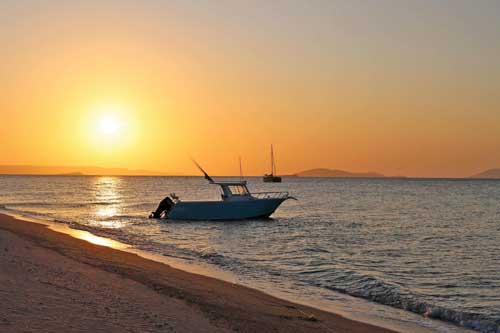
We were back on the bitumen to Laura and then dirt road and tyre pressure down to get to Kalpowar Crossing, where we stayed the night.
The car towing the big boat and another car detoured to Musgrave and then to the Annie River to launch the big boat, which was to be driven from the river into Princess Charlotte Bay and around Bathurst Head to meet us at the Crocodile camping area the next day.
The car crew met us later that night at Kalpowar, along with the stragglers in the Toyota LandCruiser Troopcarrier and tinnie.
From there the roads deteriorated, so the going was slow from the Wakooka Rd intersection, taking almost five hours to travel about 120km to our beach campsite.
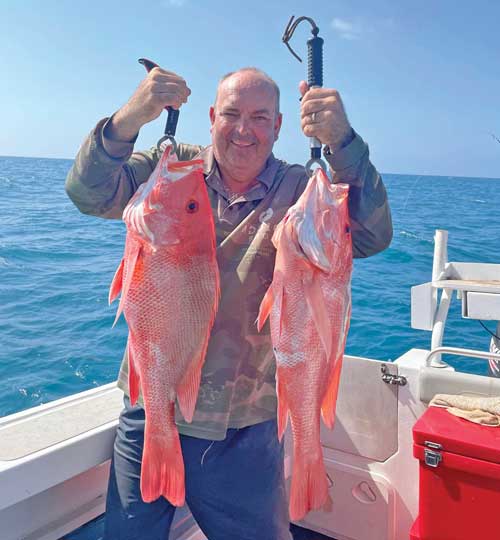
Over three hours we set up camp, made a fuel storage area away from everything, organised shade with tarps and marquees, arranged the showers, toilets, tents, spit, fridges, solar blankets and more – only then were we ready for two weeks of fishing and crabbing.
Our first night, we sat at the campfire, had a trip post-mortem and talked about the next day’s plans.
Wind was our issue, however the next three days presented an opportunity for the big boat to go wide, while the smaller boats tested creeks and close islands.
Many crab pots were set and on day two we had over 20 mud crabs in the Esky, then later in the cooker.
The surprising thing was the number of estuary cod in the pots, including two that went to 60cm, plus a few small sharks and sand crabs.
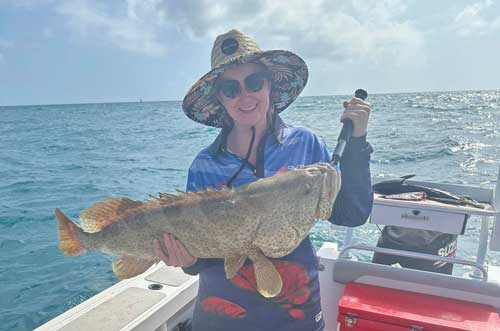
At night, a couple of rods were set on the beach, which grunter, trevally and sharks took the bait from.
All bait was garnered through the cast net activities either off the beach or at creek mouths.
Garfish was the main catch, along with small barramundi, queenfish, whiting, salmon, bream, barracuda and of course mullet of all sizes.
I’ll say now… the midgies!
Wow!
Dawn and dusk saw these pesky pests in droves, and it wasn’t until day three that we’d learnt how to avoid the sting – though they were always around, with some finding their way into tents for a rather uncomfortable night’s sleep, or lack thereof.
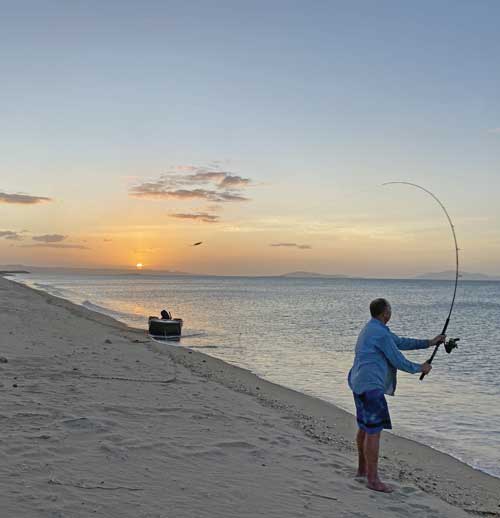
On return from the wide trip, the big 8m boat had a couple of Eskies full of nannygai, trout, longnose and grass emperor, and more.
They did have shark trouble but pulling these fish from 20m was rewarding and fun, especially using vibes and soft plastics, with Cookie using light gear.
Brad, Brendan and myself were in the red 4.65m boat and found ourselves hooking extra-oversized queenies, spanish mackerel and golden trevally when trolling some islands to the northwest.
While on anchor, sharks loved our bait, however we did pull some grassies, trout, cod, spanish flag, moses perch and trevors that got past them for a good-looking Esky.
One night’s dinner consisted of an entrée of freshly cooked mud crab and fresh-shucked black lipped oysters, followed by reef fish three ways and chips.
I even cooked a heavy carrot cake for dessert in the camp oven.
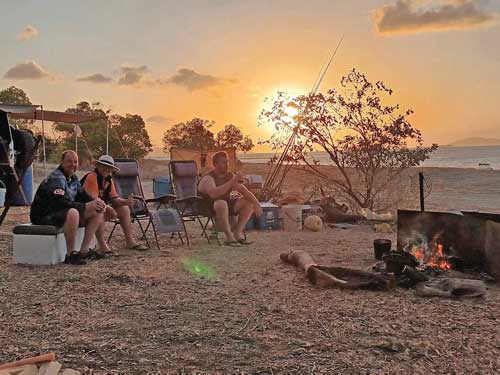
Sitting by the fire, sipping cold beverages, eating the ocean’s finest while overlooking the wide expanses of Bathurst Bay with the sun setting over the water… it does not get any better.
It took a couple of days to get the two boats’ anchoring systems working a treat, with unfavourable wind conditions and inconsistent tide movements, as well as taking precautions not to enter the water due to the apparent prevalence of crocodiles – though we didn’t see any, there was evidence of them, with our crab pots in nearby creeks crushed.
From our camp, it was an 11km boat run to the headland, which was a spectacular trip featuring mammoth black boulders towering to the sky.
From there, it was a short 1.5km run to Boulder Rock group, where we hid from the big southeast wind.
There was no swell as such, only wind chop, so it was safe in the small boat but uncomfortable.
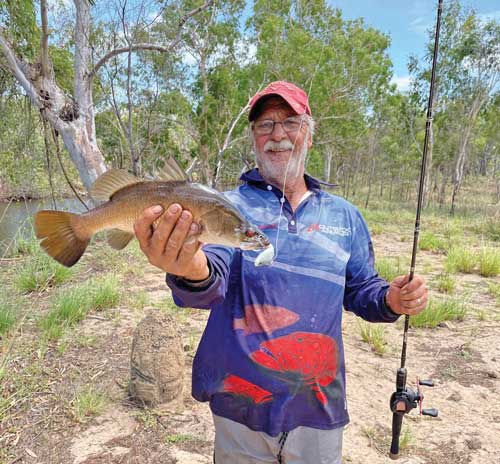
A further 5km northeast was Pipon Island, which provided shelter from the wind and was a great place to walk the beach for land-based fishing and exploring.
Schools of trevally swam passed us, big bust ups slightly out of casting range, sting rays, turtles, barracuda and wildlife abound in the crystal-clear water and unspoiled beaches.
Getting to the beach was tricky, however we found the ‘stick’ land marks and lined them up for a safe entry through the fringing reef system.
That system provided great topwater lure fun with trout, trevally and stripies making their presence felt.
The big boat with Curtis, Mollie, Cookie, Michael and Daryl onboard were out again, 30km from camp, in 20m of choppy water and the run pushing hard.
But their persistence and patience were rewarded with a good haul of reefies, including the elusive red emperor ticking off a bucket-list fish for Michael.
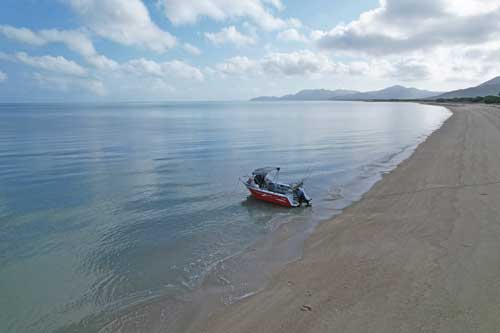
Of course, the bludger trevally were kept for crab pot bait.
We were also happy to catch land-based mangrove jack and barramundi in the creek systems to the west.
For our rest day, we hooked up the trailer and jumped into a couple of vehicles to go freshwater collecting from a small creek system about 3km from camp.
This creek also presented the opportunity for a well-deserved bath in the cool… no, cold water.
We filled the two 205-litre plastic drums and headed back to decant water to the van and other containers.
We had three shower set ups, with Team Outback Armour having a cold-water only one – though with the big drums sitting in the sun and it being 35C all day, a very warm shower at night was good.
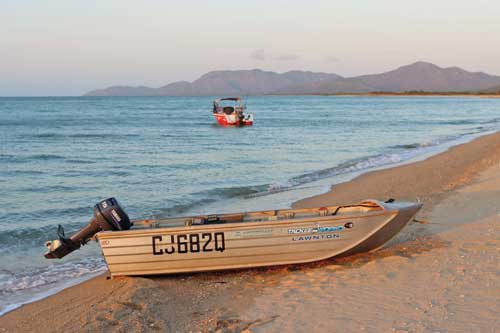
And the other gang, Team Opposite Lock, with a heated shower in the van and a solar-heated bag one outside.
Daryl did a lot of evening cooking, with three nights being ‘roast beef and lamb’ slow cooked over the coals and spit.
Importantly, Curtis took a satellite phone to get weather updates and to stay in contact.
This is an essential item in these remote areas.
Not essential was our satellite television, which allowed us to watch the AFL and NRL grand finals, as well as Bathurst 1000.
On that note, how did the Broncos lose the GF?
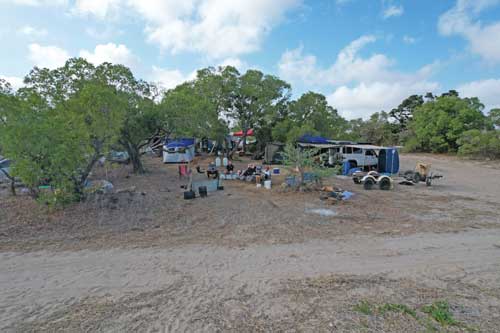
A funny thing was watching the local regional ads, with one for a pressure washer called the ‘Krapof’ on repeat.
The camps and beaches were reasonably clean on our arrival, with only a sprinkling of debris.
The creeks were so fishy – however, we didn’t chance a night-time fish.
There were a few groups camped along the 10km stretch of Cape Melville National Park beaches, with an estimated 25 people in total while we were there, though none within sight of our camp.
They were at Granite, Oystercatcher and Wongai camping areas, and as the Department of Environment of Science limits numbers to this remote area, advanced bookings are essential.
The end to our adventure came too soon and for the return trip, our teams split at Atherton Tablelands, with Team Outback Armour headed west to Forsayth past Mount Surprise and home via the Charters Towers inland route, while Team Opposite Lock returned via the coastal route.
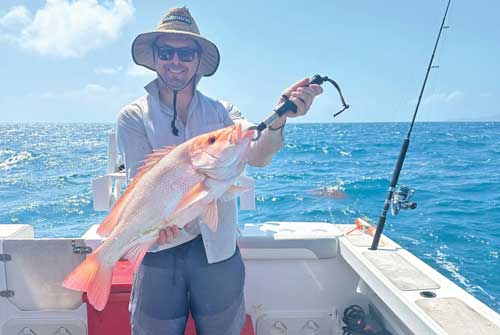
Undertaking a trip such as this one, with big and small boats, is a mission and needs a great deal of planning.
The fishing was good, even spectacular at times, crabbing was off the charts, the scenery was awesome and the night skies were incredible.
With an average overnight temperature of about 25C and 35C during the day, keeping well hydrated was critical.
The wind was constant up there and would occasionally come in bursts.
The bindis at camp were annoying but a good pair of pluggers kept them from causing issues and the midgies can be managed if prepared.
And the sunsets… what can I say?
 Bush ‘n Beach Fishing Magazine Location reports & tips for fishing, boating, camping, kayaking, 4WDing in Queensland and Northern NSW
Bush ‘n Beach Fishing Magazine Location reports & tips for fishing, boating, camping, kayaking, 4WDing in Queensland and Northern NSW









